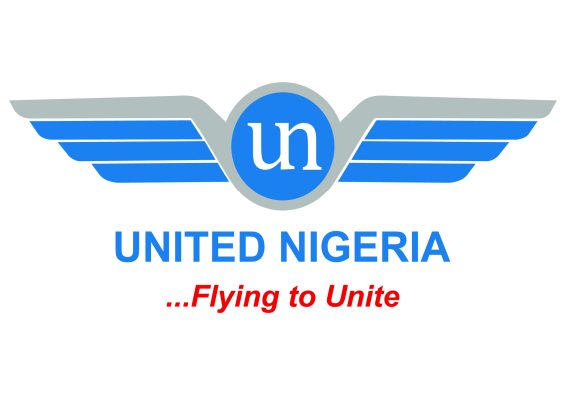Latifat Omolara Ayanponle: Transforming Human Resource Integration Strategies in Mergers and Acquisitions

As mergers and acquisitions (M&A) continue to be a driving force in the global business landscape, the focus is not only on financial metrics and operational synergies but also on one of the most critical components for long-term success: the integration of human resources (HR). Leading the way in this often-overlooked aspect of M&A is Latifat Omolara Ayanponle, whose groundbreaking research is shaping the future of HR strategies during organizational transformations.
Ayanponle’s research paper, Integrative HR Approaches in Mergers and Acquisitions: Ensuring Seamless Organizational Synergies, published in the Magna Scientia Advanced Research and Reviews Journal, provides an in-depth exploration of how strategic HR interventions can ensure the success of M&A ventures by addressing cultural integration, talent retention, and employee engagement. Alongside her co-authors Bernadette Bristol-Alagbariya and Damilola Emmanuel Ogedengbe, Ayanponle has advanced a critical understanding of the human side of M&A, one that can make or break the potential of even the most financially sound deals.
Understanding the People Factor in Mergers and Acquisitions
While financial due diligence, operational synergies, and strategic fit are often the primary focus of M&A discussions, Ayanponle’s research highlights how critical human capital integration is to achieving sustainable success. She states, “Without effectively managing the people aspect, even the most promising mergers can falter. HR integration is not just a support function; it is the backbone of successful M&A implementation.”
Her research finds that the failure to properly integrate organizational cultures during a merger can create lasting friction, reduce employee morale, and lead to talent loss—all of which significantly affect the company’s performance and post-merger synergies.
“The challenge lies in reconciling diverse corporate cultures, and HR must act as the mediator, ensuring alignment while fostering an environment that values each organization’s identity,” Ayanponle explains. She emphasizes that organizations must not underestimate the importance of managing employee perceptions and behaviors to maintain workforce stability and engagement during this tumultuous period.
The Role of HR in Culture Integration and Organizational Synergies
Cultural integration, according to Ayanponle’s research, is one of the most significant hurdles in any M&A process. Each organization involved brings its own values, work styles, and processes to the table, which can result in clashes if not managed effectively. “Cultural integration doesn’t happen by accident,” Ayanponle states. “HR plays a vital role in designing strategies that align these values while fostering a new, unified organizational culture.”
Her paper stresses the need for proactive cultural assessments—early-stage evaluations of both organizations’ values, work ethics, and employee expectations—before the merger is finalized. This proactive approach helps identify potential areas of conflict and facilitates smoother transitions by setting the stage for a shared culture that reflects the best of both organizations.
Talent Retention: Keeping Key Players in the Game
One of the most significant challenges during any merger or acquisition is talent retention. Ayanponle’s research underscores that many M&A deals fail not because of financial or operational issues but because of the loss of key employees who feel insecure about their future in the newly merged entity.
“Employees are often the most valuable asset in any organization. During a merger, uncertainty can lead to a flight of talent, especially among top performers,” Ayanponle notes. She advocates for the creation of targeted retention strategies, which include clear communication about the future of employees’ roles, career development opportunities, and tailored incentives to ensure high performers stay engaged and motivated throughout the integration period.
Her work emphasizes that, while compensation is important, “retention strategies should also focus on emotional commitment, creating a sense of security, and offering career advancement opportunities. When employees feel valued and involved in the process, they are more likely to remain loyal to the new organization.”
Employee Engagement: Creating a Unified Workforce
Beyond retention, Ayanponle’s research highlights the importance of employee engagement in the success of an M&A. Engagement is about much more than keeping employees satisfied; it’s about fostering a deep sense of purpose, connection, and alignment with the goals of the new organization.
“Engaged employees are the key to realizing synergies,” Ayanponle explains. “HR must go beyond transactional communication to create an environment where employees feel included in shaping the future of the merged organization.”
Her research provides a comprehensive framework for improving employee engagement during the integration phase. This includes transparent communication, active listening, and employee involvement in decision-making processes. Creating platforms for feedback and acting on that feedback fosters trust and empowers employees, ensuring that they remain committed to the organization’s vision.
Using Technology to Support HR Integration
In the rapidly evolving world of M&A, technology plays a significant role in HR integration. Ayanponle’s research explores how digital tools and platforms can streamline HR operations, improve communication, and ensure seamless integration. “Technology isn’t just a tool—it’s an enabler for successful integration,” she states.
Her paper advocates for using digital platforms for employee data management, performance tracking, and real-time feedback. These technologies make it easier for HR teams to monitor integration progress, address emerging issues promptly, and ensure that HR practices align with the overall business strategy.
Furthermore, she emphasizes the importance of HR information systems (HRIS) to manage employee records across both organizations. This system ensures that data is shared, compliance standards are met, and performance evaluations are aligned, even across two different entities.
Metrics and KPIs: Measuring HR Integration Success
Ayanponle’s paper also delves into the importance of metrics in assessing the success of HR strategies in M&A. Key performance indicators (KPIs) such as employee satisfaction, retention rates, and productivity are essential in evaluating whether integration efforts have achieved their objectives.
She advocates for using post-merger surveys, focus groups, and 360-degree feedback mechanisms to gauge employee sentiment. “Monitoring progress through continuous feedback and adapting strategies based on real-time data is essential for ensuring that integration leads to positive outcomes,” she emphasizes.
Ayanponle’s research encourages HR teams to regularly assess the impact of cultural integration, engagement initiatives, and retention strategies. By doing so, HR can identify areas for improvement, adjust strategies accordingly, and ensure that employees remain motivated and aligned with the new company’s objectives.
A Holistic Approach to M&A Integration
Latifat Omolara Ayanponle’s research on M&A HR integration underscores the importance of taking a holistic approach to human capital management during corporate mergers. The findings suggest that organizations must adopt comprehensive HR strategies that address culture, engagement, retention, and technology from the outset of the deal.
“M&A is a journey, not a destination,” Ayanponle concludes. “It requires continuous effort, open communication, and a strong commitment to aligning people, culture, and strategy. HR plays a crucial role in guiding organizations through this transition, ensuring that the workforce is engaged, aligned, and ready to embrace the future.”
As the landscape of global business continues to evolve, Ayanponle’s insights offer a valuable roadmap for companies looking to maximize the potential of their M&A strategies. Through effective human resource integration, organizations can not only survive mergers but thrive in them—building stronger, more unified teams that drive long-term success.







